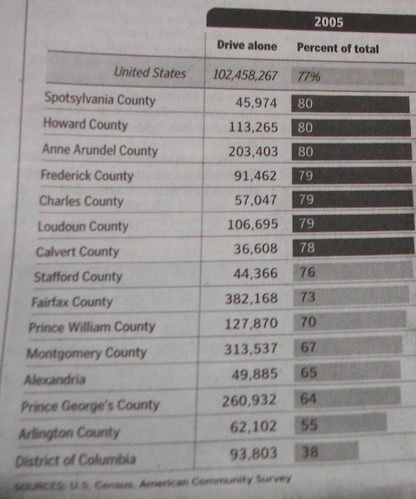Congestion charging ... and Sweden
I'm not sure how I feel about congestion charging. It's working for London. And it imposes a charge on road users, who normally don't pay the full cost of their impact. And since cities often leak income to suburbs this is a good way to capture some of the costs.
It looks like Stockholm is going to impose a congestion charge. But it's created some interesting politics.
1. The local Social Democrats who put the system out to test it said they wouldn't call for imposing a charge.
2. The National Social Democratic Party said impose a tax, to solidify their connection to the Green Party.
3. But the Social Democrats lost in the recent election, at both levels.
4. But the referendum to approve the Congestion Charge passed.
5. But how will the Conservatives introduce the Congestion Charge, if at all, because the referendum is only advisory.
6. And what is this crazy talk about having the suburbanites who would pay the charge for the most part, get to vote too?
When did the city people ever get a chance to vote on how suburbanites reproduce city spaces to their dictates?
Read all about it in the Streets Blog, "Stockholm Voters Approve Congestion Charging: But Reject the Political Party That Supported It. Result: Gridlock Over Gridlock."
The problem is that most car trips are single occupancy, and there will never be enough capacity in the globe to accommodate every trip a driver wants to make without congestion. And with living patterns that create or produce a lifestyle around single rather than combined trips, more trips are "produced". Since they are single occupancy vehicle trips for the most part, there is no solution.
Did you see the graphic in yesterday's Post on commuting behavior in the Washington area? Unfortunately it's not online. But 77% of all U.S. commuting trips are people driving alone. In the DC region it is "much" less because the inner ring counties have somewhat higher vehicle occupancy numbers. And of course, DC and Arlington County Virginia are much better still.
 Commuting behavior in the Washington region of the United States. Graphic by Laura Stanton and April Umminger of the Washington Post. Data comparing 2005 to 1990 is presented here.
Commuting behavior in the Washington region of the United States. Graphic by Laura Stanton and April Umminger of the Washington Post. Data comparing 2005 to 1990 is presented here.Index Keywords: mobility; car-culture



0 Comments:
Post a Comment
<< Home